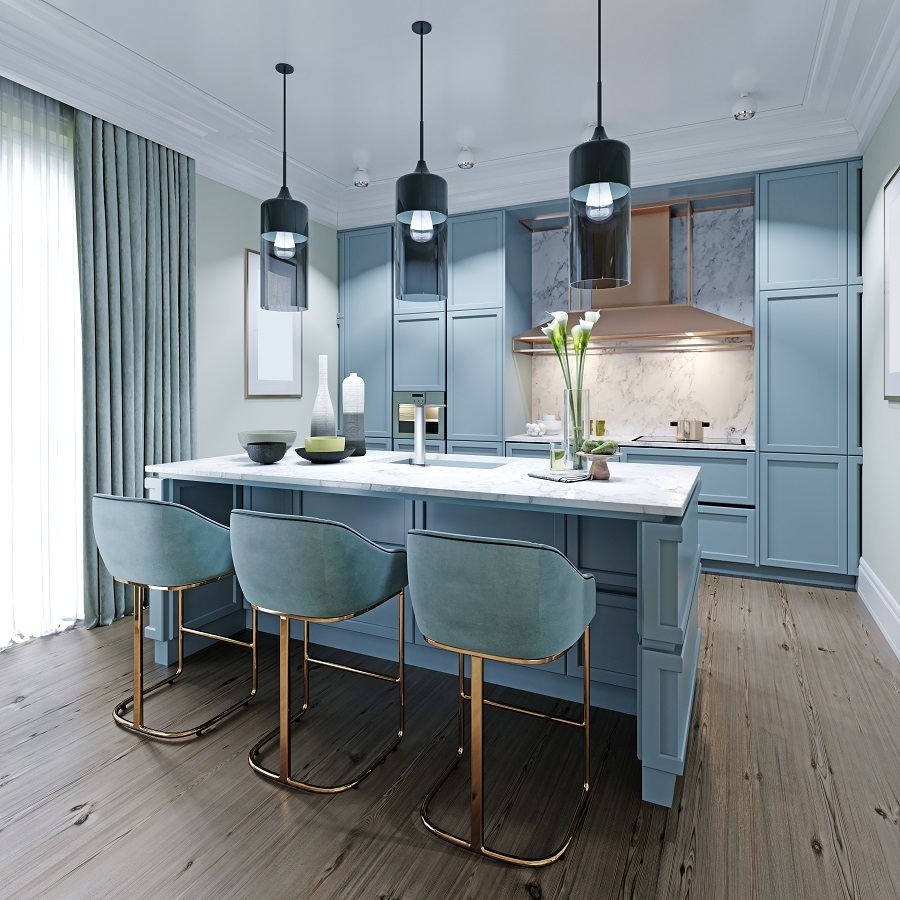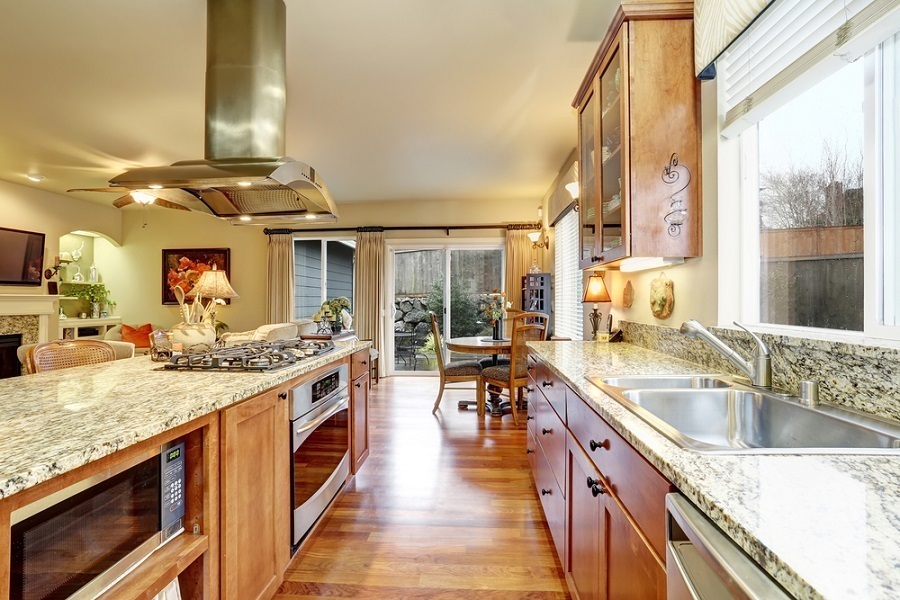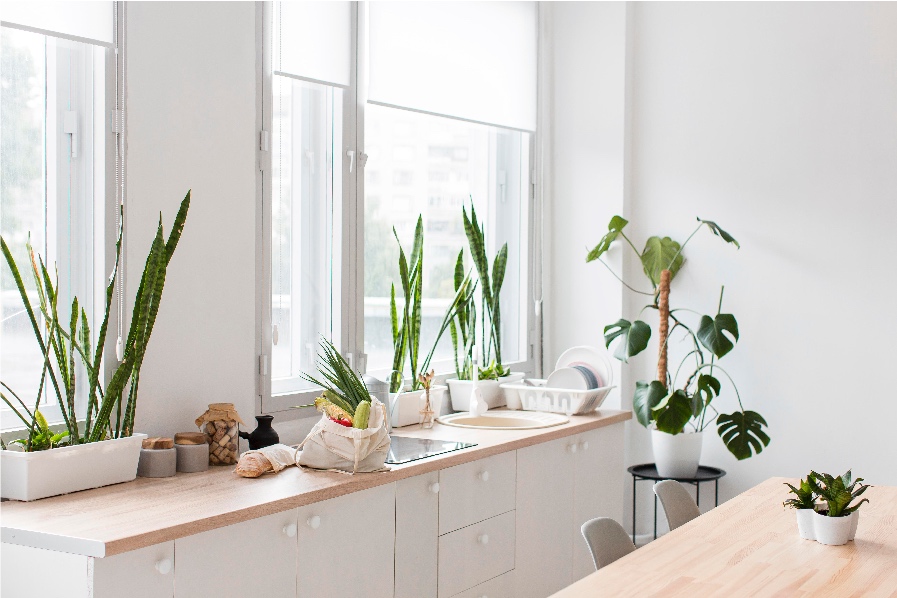Last updated on
Follow these four simple tips to make your kitchen much more inviting and cozier. Read on!
The kitchen is the heart of the home. It’s where we gather to prepare meals, eat, and spend time with loved ones. The kitchen is the place where memories are made, and it’s where we create nourishing meals that sustain us.
This blog post will share some tips for creating a cozy and inviting kitchen space. We’ll explain how warm colors, soft lighting, and natural elements can make your kitchen feel more welcoming.
Whether you’re a seasoned cook or just learning your way around the kitchen, having a cozy and inviting space can make all the difference. A well-designed kitchen can inspire creativity, promote relaxation, and encourage healthy habits.
By following these tips, you’ll be able to transform your kitchen into a space that nourishes your body and soul. So, let’s get started!
What's Inside
Add Soft Lighting

Lighting can have a significant impact on the mood and atmosphere of a room. In the kitchen, lighting can distinguish between a bright and welcoming space and a dim and uninspiring one.
There are three types of lighting that should be incorporated into the kitchen: ambient, task, and accent lighting. Ambient lighting provides general illumination, while task lighting focuses on specific areas where food is prepared and cooked. Accent lighting can highlight certain features, like a beautiful backsplash or a collection of dishes.
To integrate different types of lighting, consider adding pendant lights over your kitchen island or a chandelier over your dining table. Under-cabinet lighting can provide task lighting where needed, and sconces can add accent lighting and a touch of elegance.
When selecting lighting fixtures, consider choosing those with warm tones and cozy materials like wood, brass, or copper. This will create a cozy and inviting atmosphere in your kitchen.
You can create a kitchen space that is both functional and inviting by using different kinds of lighting and choosing fixtures that offer warmth and coziness. Your kitchen will become a place where you enjoy spending time and where family and friends love to gather.
Choose a Warm Color Palette

Warm colors like red, orange, and yellow can create a welcoming atmosphere in any room. In the kitchen, warm colors can stimulate appetite and promote a sense of togetherness.
A popular warm color scheme for kitchens is red and white. Red adds energy and excitement, while white provides a clean and bright background. Another option is yellow and green, which brings to mind the colors of nature.
Consider painting an accent wall or using colorful backsplash tiles to incorporate warm colors in your kitchen. If you need a professional for painting and tiles, you can get painters and decorators near you on MyBuilder. You can also add warmth through decors, such as a bright tablecloth, colorful dishware, or a patterned rug.
When choosing warm colors, it’s important to consider your kitchen’s overall mood and style. Consider warm wood tones or muted colors if you prefer a more traditional look. For a modern aesthetic, try bold pops of color or graphic patterns.
Create a welcoming atmosphere in your home’s kitchen by decorating with warm colors. Whether you’re cooking for one or hosting a dinner party, your kitchen will become where everyone wants to gather.
Incorporate Textures

Textures can add visual interest and tactile comfort to any space, including the kitchen. Integrating different textures in your kitchen can create a sense of depth and warmth.
Wood is a popular texture for kitchen spaces. It adds natural warmth and character and can be incorporated through furniture like tables and chairs and decor like cutting boards and serving bowls. Metal textures like brushed nickel, brass, or copper can add a touch of sophistication and glamour to your kitchen.
Fabrics like linen or cotton can add softness and warmth to your kitchen, especially when used as cushions or curtains. Other textures, such as stone, concrete, or tiles, can add texture and dimension to your kitchen walls or floors.
It’s crucial to think about the overall theme of your kitchen when deciding how to include textures. For example, sleek metal textures may work well with a modern kitchen. Wood textures may be more appropriate for a more rustic or farmhouse-style kitchen.
Create a visually fascinating and tactilely welcoming atmosphere by combining various textures into your furniture, decor, and kitchen items. Your kitchen will become a cozy and comfortable space where you love spending time.
Bring In Natural Elements

Nature can bring a sense of calm and tranquillity to any space, including the kitchen. Adding natural elements to your kitchen can create a peaceful and refreshing environment.
Plants and flowers are a great way to incorporate natural elements into your kitchen. They add color, texture, and life to your space while providing air purification and stress reduction benefits. You can display plants in pots on the countertop, hang them from the ceiling, or even install a vertical garden wall.
Natural materials like wood, stone, or clay can add warmth and texture to your kitchen. Consider using these materials in the form of cutting boards, utensils, or even decorative items.
By incorporating natural elements into your kitchen, you can create a visually appealing and calming space. You will love spending time in your kitchen, surrounded by the beauty and tranquillity of nature.




